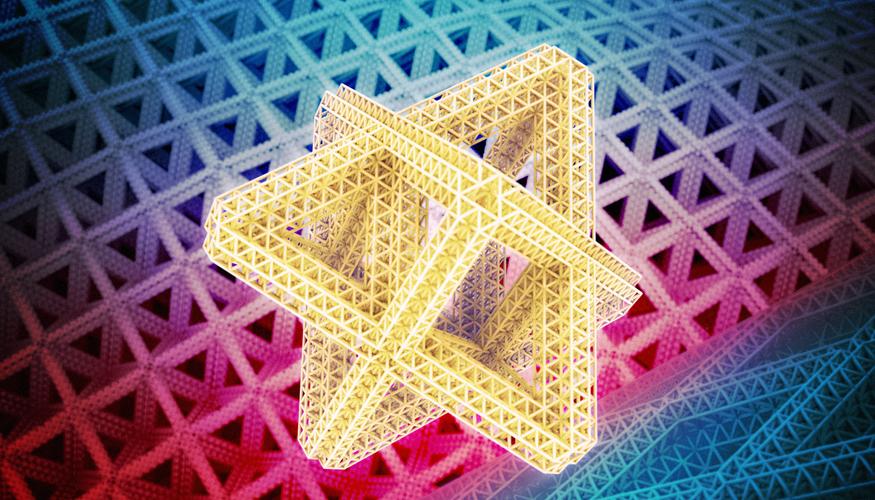Additive manufacturing is the process of building 3D structures by sequentially layering one material on top of another in a desired pattern. It is a dramatic departure from more conventional fabrication techniques in which material is removed from a bulk piece through processes such as etching or machining. Over the last decade, additive manufacturing has become a burgeoning industry, enabling rapid prototyping of components for automotive, medical, and electronic applications. News headlines in recent years have showcased the often-remarkable capabilities of 3D printers that produce macroscale objects, such as a prototype musical instrument. Although specialized technologies are available for developing 3D structures with small, mesoscale (millimeter-length) features—hearing aids, for example—they are limited to a small number of materials as well as component size and shape specifications.
Livermore materials scientists and engineers are designing and building new materials that will open up new spaces on many Ashby material selection charts, such as those for stiffness and density as well as thermal expansion and stiffness. This is being accomplished with unique design algorithms and research into the additive manufacturing techniques of projection microstereolithography, direct ink writing, and electrophoretic deposition.
For more information and detailed description:
- Science & Technology Review article highlighting the technologies developed at LLNL
- Review a presentation and video.
- LLNL Engineering Division website highlighting Materials to Manufacturing
- Projection microstereolithography can reliably create structures in three dimensions. Projection microstereolithography is a high-speed parallel process that can fabricate structures at both micro- and macroscales within minutes.
- Direct ink writing can rapidly pattern different materials into multiscale, multidimensional structures creating micro- to macroscale structures with extreme precision.
- Although typically used for creating protective or performance-enhancing coatings, electrophoretic deposition has great potential for building 3D designer materials. Among its advantages are the ability to incorporate multiple materials into one structure, extreme precision, and potential for large-scale production.
The additive manufacturing initiative at LLNL is an ongoing research program. Intellectual property is continually being developed and protected.


